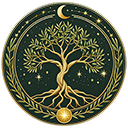Tarot reading, an ancient art steeped in mystery and symbolism, has transcended its origin to carve a niche in various cultures and traditions around the globe. What began as a simple card game in 15th-century Europe has since evolved into a profound tool for divination, self-reflection, and spiritual exploration. This article delves into the rich tapestry of Tarot reading, exploring its historical roots and diverse interpretations across different cultures.
The Origins of Tarot
The etymology of the term “Tarot” is shrouded in mystery, with several theories attempting to trace its roots. Most historians agree that tarot cards originated in Northern Italy during the 15th century, initially used as playing cards called “tarocchi.” The earliest surviving decks, such as the Visconti-Sforza Tarot, exhibit stunning artwork reflecting the cultural and political milieu of Renaissance Italy. However, it wasn’t until the 18th century that tarot began to be associated with divination and esotericism. Prominent figures like Antoine Court de Gébelin and Éliphas Lévi, through their writings, infused tarot with mystical significance and connected it to Kabbalah, astrology, and alchemy. This fusion of influences gave rise to the Tarot as we know it today—a divination tool rich in symbolism and universal archetypes.
Tarot in Western Cultures
In Western cultures, tarot has become synonymous with fortune-telling and spiritual guidance. The most widely used deck, the Rider-Waite-Smith Tarot, developed in the early 20th century, laid the groundwork for modern tarot practice. Its evocative imagery and clear symbolism have made it a favourite among practitioners. In these cultures, tarot readings often serve as a mirror, reflecting the querent’s current life situation, potential obstacles, and pathways forward. Many tarot readers utilise different spreads—layouts of cards that offer varied insights depending on the positions and meanings attributed to each card. The practice is deeply personal; readers often combine intuition with traditional card meanings, creating a unique dialogue that resonates with the individual’s circumstances. Moreover, tarot has become a prominent aspect of the New Age movement, where it is embraced as a tool for self-exploration and mental health. The therapeutic potential of tarot has garnered attention in contemporary psychology, with some practitioners advocating for its use in counselling and personal development as a way to foster intuition and promote self-awareness.
The Role of Tarot in Romani Culture
Tarot has also found a significant place within Romani culture, where it is intertwined with the traditions of fortune-telling. The Romani people, often referred to as Gypsies, have maintained a strong connection to spiritual practices, including tarot reading. They incorporate tarot into their rich heritage, blending it with their unique methods and beliefs. Romani tarot readers typically employ a more intuitive and storytelling approach to readings, relying on their deep cultural traditions and personal insights. This method diverges from structured interpretations, offering a flexible and dynamic experience for the querent. Through this lens, tarot becomes a living practice, evolving with each generation while preserving its mystical heritage.
Eastern Perspectives on Tarot
While tarot is primarily associated with Western traditions, its influence has extended into Eastern cultures as well. In India, for instance, the mystical underpinnings of tarot resonate with the philosophies of Hinduism and Buddhism. Tarot is often integrated with other divination methods, such as astrology and palmistry, creating a comprehensive spiritual framework for individuals seeking guidance. Many tarot readers in India emphasise the significance of the cards in relation to karmic cycles, utilising the insights gained from readings to foster personal growth and spiritual development. This holistic approach aligns well with the age-old traditions of self-exploration and enlightenment found in Eastern philosophies. Moreover, some modern interpretations blend tarot with practices such as Reiki and chakra healing, enhancing the spiritual experience by creating a multi-dimensional exploration of the self.
Tarot’s Global Journey: Adaptations and Innovations
As tarot made its way across the globe, it amalgamated with local beliefs, practices, and symbolism. In Latin America, for example, tarot has been embraced within indigenous spirituality, where it complements local divination systems and spiritual healing practices. This integration often leads to the creation of unique tarot decks that reflect cultural motifs and themes, making the cards more relatable and meaningful for practitioners. In Korea, tarot has evolved into a mainstream practice, with professional tarot reading salons emerging throughout urban areas. Here, tarot is frequently used alongside traditional fortune-telling methods, showcasing a blend of modern and ancestral wisdom. The rise of social media has also facilitated the sharing of tarot knowledge, leading to adaptations and innovations that resonate with younger generations.
Conclusion
Tarot reading encapsulates a rich tapestry of cultural meanings and traditions woven through time and space. From its humble beginnings as a card game in Italy to its adaptation as a spiritual tool across the globe, tarot has evolved and resonated with people from diverse backgrounds. Whether as an instrument for personal growth, a tool for healing, or a means of connecting with the divine, tarot invites seekers to explore the complexities of their existence. In this way, it stands as a bridge connecting the past with the present, the personal with the universal, and the mundane with the mystical. At its core, tarot offers a journey—a pathway to self-discovery and understanding that transcends cultural boundaries, inspiring individuals to delve deeper into the mysteries of life.
